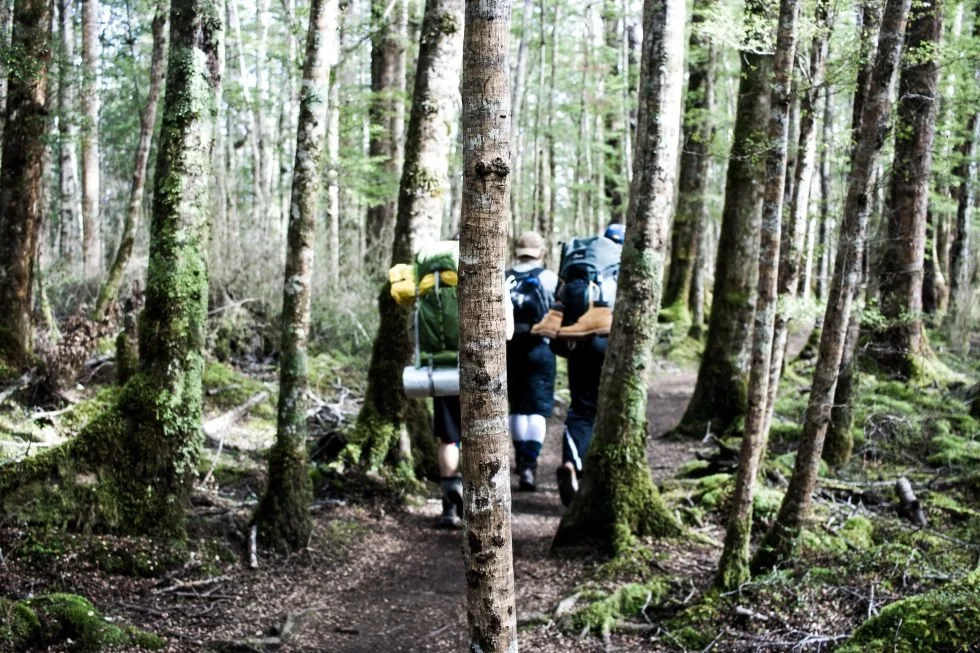What is Wilderness Therapy?
by Kathy Meyer, of Meyer Education and Family Services
This article was written by Kathy Meyer with excerpts (with permission) from a 16 year old client who wrote about her experience at a Therapeutic Wilderness Program for her college admission’s essay in 2019.
Therapeutic Wilderness Therapy, also referred to as Outdoor Behavioral Health, utilizes the container of nature and the outdoors to reach individuals that have been unable to make changes in more traditional settings including outpatient therapy. Wilderness therapy has historically been an intervention for adolescents and young adults. It’s often seen as a ‘timeout’ or a ‘reset’. The intervention places young people in a safe setting where they can focus on immediate needs by removing distractions and negative influences that have contributed to maladaptive behaviors and gotten them ‘off track’. Wilderness therapy programs have three main objectives: to help participants assess their issues in a neutral setting, to help parents and their children develop and learn coping strategies and to help participants take control of their current struggles to develop hope and momentum for the future.
All I wanted in life was happiness and I couldn’t figure out how to reach the true happiness within me. I cut out all the most supportive people in my life thinking they had no true intention in relieving me from my suffering. As if I felt my life couldn’t become any more substandard, the option of attending a therapeutic wilderness program never crossed my mind. One day I was home in my bed drowning in my deep, dark thoughts and the next I was stripped from clothes given only what could fit in my backpack for the next three months. I knew with the tears flooding my eyes that it was time for me to turn my whole life around.”
There are different types of Wilderness Therapy Programs. Some rely on the nomadic model where groups hike from one destination to the next. Others have a specific focus where the group takes part in activities and modules for example, rock climbing, equine therapy and even horticulture therapy. Therapeutic Educational Consultants and Referring Professionals work to match students with the model that best meets their treatment objectives and interests. For instance, if a young person is struggling with anxiety and depression they will go to a specific group and therapist that has this expertise while another client might be struggling with co-occurring issues including substance use and these individuals will go to a group where the focus is on overcoming the use of drugs and/or alcohol to mask underlying struggles. Young adult and adolescent groups are separated by age with groups focusing on specific life cycle issues for those populations.
As the weeks went by, I found myself more connected with my emotions. I felt more in touch with nature I surrounded myself with. My first few days I felt self-love embody me as a whole and I ultimately felt like I belonged. I started to become a leader, my group looked up to me and admired my positive outlook on life and the creativity my mind generated. I felt confident leading the hikes, cooking the meals, being vulnerable in our therapeutic groups, guiding my peers through meditations and most importantly making the members of my group feel confident in doing so as well.
While the activities may differ from program to program, the core of all Wilderness Therapy programs is that therapy is taken out of the sterile office environment and provided in a dynamic setting, off the grid and away from distractions including negative influences, destructive patterns, family triggers and technology. This shift creates a place where resilience develops, success is achieved and a plan is developed for the future. The experience can be transformative for young people.
I was fortunate enough to have the opportunity to leave my group and camp alone on a what is referred to as a “solo.” In those three days, I learned more about myself than I ever thought was possible. While sitting alone facing East, I surrounded myself with bundles of sage, wildflowers, and my thoughts. I was anxious at first but as time went by and my mind became more settled, I realized I wasn’t alone. As the night got darker, I could hear the bugs crawling through blades of grass, birds settling into nests, critters coming-out to hunt in their nocturnal world, and the nights got quite thunderous as the frogs made their way out of the creek, I embodied myself with. I was never scared, and I felt in-tuned. I knew at that moment that nature was my safe place, where the wildlife became my manifestation.
Wilderness therapy emerged as a modality over 30 years ago and has been growing ever since. While early programs were focused on braving the elements, the field of Wilderness Therapy has evolved therapeutically addressing the entire family system. Groups are run by licensed, at least master’s level, therapists and multi-disciplined treatment teams are assessing each participant and providing recommendations. There are also studies that support the efficacy of this treatment. Evidence and research conducted by the Outdoor Behavioral Healthcare Center has supported that wilderness treatment programs are effective at helping struggling teens and young adults.
As the short inspirational 90 days went by in a blink of an eye I knew, in my heart that I was truly at peace with myself. I then attended a boarding school where my ability to do well in school skyrocketed which improved my confidence and self-esteem. At this school, I learned tools to guide me through my work which has aided me in constantly performing at a higher level. The passion I have towards my art, school work, family and friends has generated from the warmth, love and eye-opening experiences I encountered on this journey. I am so ready to start my new chapter showing the world how happy I truly am.
For questions or concerns contact TCA, or Hire a Therapeutic Consultant.

